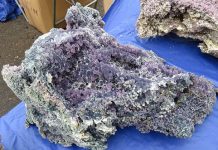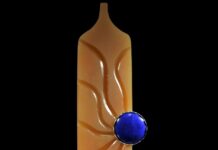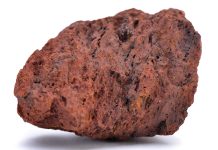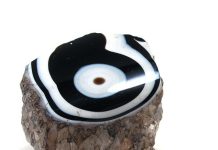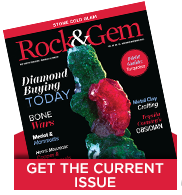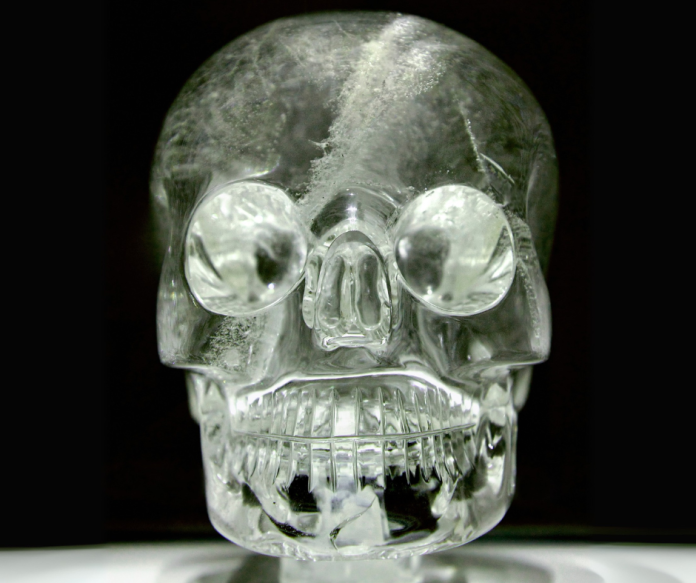
Crystal skulls, carved from natural quartz, represent one of the most intriguing intersections between mineralogy and mystery in modern history.
The late 1800s were heady years in Mesoamerica for a colorful and often shady mix of pseudo-archaeologists, grave robbers, treasure hunters, and antiquities dealers. Lured by an insatiable appetite for pre-Columbian relics on the part of museums and wealthy collectors in the United States and Europe, they sweated their way through the jungles of southern Mexico, Guatemala, Honduras, and British Honduras (now Belize), acquiring and selling the material legacy of the ancient Toltec, Maya, and Aztec civilizations. Of all these objects, the public was most intrigued by crystal skulls.
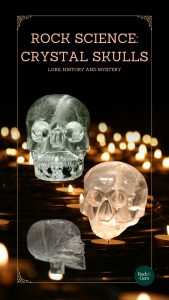
Cut from rock crystal and supposedly of ancient origin, these crystal skulls were near-life-sized carvings of human skulls. They would be investigated by scientists, sought by metaphysical practitioners, acquired by leading museums, celebrated in popular culture, and, along the way, ingrained into the public imagination.
Eugène Boban and the Origins of the Crystal Skulls
Of the 13 existing examples of crystal skulls, four—the British Museum, Paris, Mitchell-Hedges and Smithsonian skulls—are the most widely known. The origin of many of the 13 known skulls can be traced to a French antiquarian named Eugène Boban. The 23-year-old Boban arrived in Mexico in 1857, learned to speak Spanish and indigenous Nahuatl, and went into the antiquities business.
Boban’s reputation grew quickly. In 1863, French Emperor Napoleon III commissioned him to lead an expedition to collect antiquities. In 1870, he opened a shop in Paris and later exhibited part of his collection at the prestigious Musée d’Ethnographie du Trocadéro in Paris (now the Musée de l’Homme). In 1887, Boban moved his shop to New York City, where he sold an intricately carved, 36.5-pound crystal skull to a wealthy collector who later put it up for auction. The buyer was acclaimed gemologist George Frederick Kunz, then a vice-president of New York City’s prestigious Tiffany and Co., who was acting on behalf of the British Museum. Kunz passed the skull along to the museum along with his signed statement attesting to its authenticity as an Aztec artifact.
Upon Boban’s death in 1907, his collection, including at least three additional crystal skulls, was sold to a prominent ethnographer who later donated one of the skulls to the Trocadéro Museum.
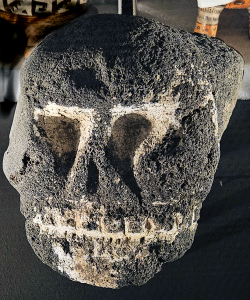
Scientific Skepticism Surrounds the Crystal Skulls
More than a few of the Mesoamerican antiquities that appeared on the markets in the late 1800s, including offerings by Eugène Boban, were fakes. Although the extent of the problem was unknown, it was significant enough for Smithsonian Institution archeologist William Henry Holmes to publish “The Trade in Spurious Mexican Antiquities” in an 1886 issue of Science magazine as a warning to both private collectors and museum curators.
At the time, science could confirm only that the crystal skulls were indeed fashioned from the rock-crystal variety of quartz, but could offer nothing regarding age or origin. By 1900, bona fide archaeologists had begun questioning the purported origin of these skulls. Not only were authentic Mesoamerican rock-crystal artifacts of any type rare, but all known examples were much smaller than the crystal skulls. Also, the artistic style of the skulls did not match that of any other known Mesoamerican artifacts. Oddly, none of the crystal skulls had been recovered by accredited archaeologists. And all had surfaced between the early 1860s and 1890, none before and none after.
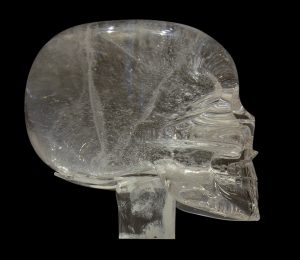
The Mitchell-Hedges Skull: Fact, Fiction and Fame
Interest in crystal skulls waned until 1944, when British author and adventurer Frederick Mitchell-Hedges unveiled what would become the best-known skull. Mitchell-Hedges spun a tale of how, in the 1920s, his search for evidence of the fabled island of Atlantis led him to the ancient Mayan city of Lubaantun in British Honduras. While exploring these ruins, his teenage daughter Anna found a crystal skull.
The Mitchell-Hedges skull, as it became known, had extraordinary workmanship; it was also the most anatomically correct and the only one with a detached jaw. But inquisitive journalists soon learned that Mitchell-Hedges had actually purchased this skull at a Sotheby’s auction in London the previous year. Mitchell-Hedges explained this curious revelation by recounting how, a decade earlier, he had given this skull to a collector as collateral for a debt. And when the skull appeared at auction in 1943, he simply bought it back.
In his 1954 memoir Danger My Ally, Mitchell-Hedges named this skull the “Skull of Doom,” claiming that several people who had doubted its authenticity had died or become seriously ill.
When Mitchell-Hedges himself died in 1959, his daughter Anna kept the skull’s legacy alive through lectures, tours, and such 1970s TV shows as Arthur C. Clarke’s Mysterious World and Leonard Nimoy’s In Search of. She also embellished the skull’s already dubious history with an account of how it had “fogged up and sweated” when President John F. Kennedy was assassinated.
The Smithsonian Skull and the Search for Authenticity
In 1992, yet another crystal skull, this one cut from milky quartz, was delivered anonymously to the National Museum of Natural History (Smithsonian Institution) in Washington, DC. An accompanying, unsigned note stated that it was of Aztec origin and had been purchased in Mexico in 1960. The skull came to the attention of the Smithsonian’s Mexican archaeology expert Jane McLaren Walsh, who noted that, while skulls were a recurring motif in Aztec art, all known examples were crudely carved from basalt, not rock crystal.
In 2006, the British Museum and the Smithsonian formed a joint research team to determine the origin and authenticity of their two crystal skulls.
Crystal Skulls Under the Microscope: What Geology Shows
Smithsonian and British Museum Researchers first noted that, when studied under microscopes, the faint, residual tool marks on both museum skulls differed from those on authentic Mesoamerican rock-crystal artifacts. The tool marks on the museum skulls had been made using rotary cutting wheels and extremely hard abrasives.
Rotary cutting wheels did not exist in the pre-Columbian Western Hemisphere. And super-hard abrasives like synthetic carborundum (silicon carbide) were not available anywhere until the late 1800s.
Spectroscopic analysis next revealed that solid inclusions within the crystal of both skulls consisted of iron-rich chlorite, a basic magnesium iron aluminosilicate common in quartz from certain mesothermal and granitic occurrences, none of which are found in Mesoamerica. The inclusions were shown to be chemically identical to those in rock crystal from only two sources—Brazil and Madagascar.
Interestingly, since the early 1800s, German immigrants in Brazil had regularly shipped masses of high-quality rock crystal to the lapidary center of Idar-Oberstein in Germany for cutting. And by 1880, French colonists in Madagascar were also sending large, flawless, transparent quartz crystals to European cutters.
The Smithsonian and British Museum research teams concluded that both of their crystal skulls had been cut using modern, mechanical methods from rock crystal originating in either Brazil or Madagascar. The British Museum even announced its suspicion that all other known crystal skulls of supposed Mesoamerican origin were also fakes.
Quartz Origins: More Evidence Against the Myths
When Anna Mitchell-Hedges later allowed Smithsonian researchers to examine the Mitchell-Hedges skull, which George Frederick Kunz had deemed authentic a century earlier, they found it almost dimensionally identical to the British Museum specimen and therefore almost certainly a copy. Because it appeared to have been worked with high-speed rotary tools and diamond abrasives, they estimated that it had been carved during the early 20th century.
Meanwhile, French researchers were taking a closer look at the so-called “Paris skull” in the collection of the Musée de l’Homme. Tests revealed that microscopic bodies of water that had occluded into the rock crystal during the cutting process dated to the 1800s. A state-of-the-art quartz-hydration dating technique indicated that the Paris skull had been cut later than a reference quartz specimen documented to have been cut in 1790. The French researchers also agreed that the rock crystal in the Paris skull had, like that in the British Museum, Smithsonian and Mitchell-Hedges skulls, originated in either Brazil or Madagascar.
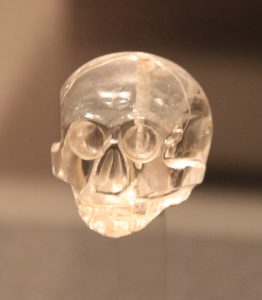
The Legacy of the Crystal Skulls in Science and Lore
Still occasionally displayed, the Smithsonian skull is labeled as a modern fake. The British Museum skull, once labeled as “possibly of Aztec origin, the Colonial Period at the earliest,” is now described as “probably European, 19th century A.D.”
But because questions about the origin of the skulls remain unanswered, many metaphysical practitioners and proponents of the supernatural continue to believe that they were carved thousands of years ago by ancient Mesoamerican civilizations, and that they possess unexplained psychic and healing powers. Some say the skulls are relics from the lost island of Atlantis, while others suggest they are proof of extraterrestrial influences on ancient Mesoamerican civilizations.
The most enduring legend focuses collectively on all 13 known crystal skulls, which are now in the possession of various museums and private owners. Some believe that the skulls contain all the consciousness, knowledge and wisdom accrued since the dawn of humanity. And when all 13 skulls are united, they will reveal the knowledge necessary for humanity’s survival.
The one thing for certain is that crystal skulls, despite revealing some of their secrets to state-of-the-art laboratory analysis, will likely never lose their hold on our imaginations.
Crystal Skulls in Popular Culture and Modern Imagination
Our fascination with crystal skulls is ingrained in popular culture. They appear in a long list of movies, books, magazines, documentaries, dramas and even video games. Miniature skulls made from plastic, glass, leaded crystal, and rock crystal serve as everything from pendants to paperweights. Skulls are also the predominant motif in Mexico’s traditional Día de los Muertos (Day of the Dead) celebrations.
Even after science had debunked the ancient origin of the crystal skulls, public interest continued to grow. One reason was the 2008 release of Paramount Pictures’ blockbuster movie Indiana Jones and the Kingdom of the Crystal Skull, an action-adventure film laced with aliens and espionage that focused on a search for a telepathic crystal skull in the Peruvian jungles. The movie skull was virtually identical in shape and size to the British Museum and Mitchell-Hedges skulls.
In 2012, the director of the Institute of Archaeology of Belize sued Paramount Pictures on behalf of Belize for using the unlicensed likeness of the Mitchell-Hedges skull in the movie. The lawsuit claimed that since the Mitchell-Hedges skull had (supposedly) been recovered from the Lubaantun ruins, it had therefore been stolen from Belize, and Paramount Pictures had illegally profited from its likeness. The suit was later dropped.
Some Hollywood historians believe that Frederick Mitchell-Hedges was the model for the Indiana Jones character played by actor Harrison Ford. But both director Steven Spielberg and scriptwriter George Lucas claim that Indiana Jones was inspired not by any individual, but by a composite of the adventurers who roamed the Central American jungles in the 1930s and were popularized in that era’s movies and pulp magazines.
This story about crystal skulls previously appeared in Rock & Gem magazine. Click here to subscribe. Story by Steve Voynick.



